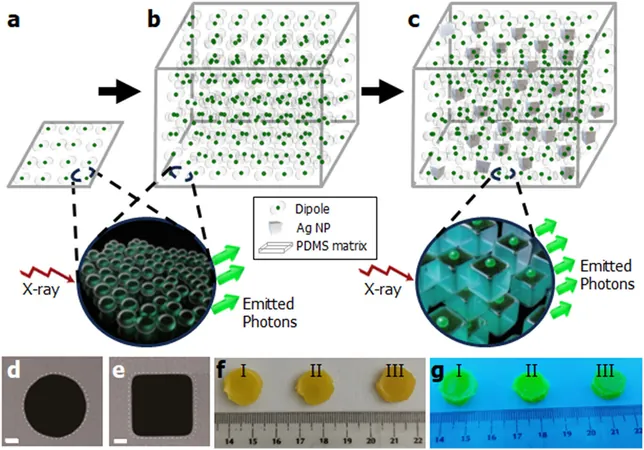
Transforming Scanning: Revolutionizing Medical Imaging with Cutting-Edge Technology
2025-05-20
Author: Jia
The Future of Medical Imaging is Here!
Imagine a medical scanner that not only speeds up the imaging process but also delivers crystal-clear pictures or a radiation detector that can detect minuscule amounts of radioactive materials with pinpoint accuracy. Thanks to groundbreaking research by scientists at the Łukasiewicz Research Network—PORT Polish Center for Technology Development, these once far-fetched ideas are now stepping closer to becoming a reality.
A Game-Changer in Scintillator Technology
In a detailed report published in Advanced Materials, the research team has unveiled a revolutionary approach to developing scintillators—materials that emit visible light when hit by high-energy radiation such as X-rays or gamma rays. These scintillators are essential across various sectors, including medical imaging, security, and high-energy physics. Unfortunately, traditional scintillators often falter, yielding weak signals and slow response times, which hampers their effectiveness in critical applications.
Nano-Engineered Solutions
Enter the world of nanoplasmonics, a fascinating field that manipulates light behavior on the nanoscale with tiny metallic structures. This innovative technology can amplify electromagnetic fields in minuscule volumes, enhancing how materials interact with light. By cleverly integrating these "plasmonic" nanostructures with perovskite nanocrystal scintillators, the Łukasiewicz team has engineered hybrid materials that significantly improve light emission speed and intensity.
Scaling Up: A Technological Breakthrough
What sets this discovery apart is the groundbreaking scale at which it operates. While plasmonic enhancements have typically been limited to ultra-thin layers or isolated nanoparticles, this Polish team has mastered a technique to embed these enhancements into solid, centimeter-sized crystal slabs—an advancement that paves the way for practical, real-world applications.
A Look Behind the Science
According to Dr. Michal Makowski, a leading researcher involved in the project, "Our work bridges the gap between nanoscale physics and practical devices. We’ve shown that it’s possible to upscale nanoplasmonic scintillators without sacrificing their unique optical properties." The secret to their success? A sophisticated self-assembly technique, where molecular building blocks spontaneously organize into ordered structures.
Robust Results and Implications{
Combining perovskite scintillating nanocrystals with gold nanospheres and nanocubes in a polymer matrix allowed researchers to maintain precise spatial alignment while enhancing structural integrity and light yield. Testing revealed up to four times the radioluminescence intensity compared to traditional scintillators, alongside markedly reduced response times.
The Future Looks Bright!
These advancements could lead to groundbreaking improvements in X-ray detectors, allowing for lower radiation exposure for patients and faster scanning processes in security and industrial applications. Most importantly, these materials are durable and scalable, making them prime candidates for mass production.
This research illustrates how interdisciplinary collaboration—melding physics, chemistry, materials science, and nanotechnology—can lead to innovative breakthroughs. As the demand for cutting-edge imaging technologies continues to rise, the Łukasiewicz Research Network stands as a beacon of hope, promising to transform fields from cancer diagnostics to next-generation space telescopes.





 Brasil (PT)
Brasil (PT)
 Canada (EN)
Canada (EN)
 Chile (ES)
Chile (ES)
 Česko (CS)
Česko (CS)
 대한민국 (KO)
대한민국 (KO)
 España (ES)
España (ES)
 France (FR)
France (FR)
 Hong Kong (EN)
Hong Kong (EN)
 Italia (IT)
Italia (IT)
 日本 (JA)
日本 (JA)
 Magyarország (HU)
Magyarország (HU)
 Norge (NO)
Norge (NO)
 Polska (PL)
Polska (PL)
 Schweiz (DE)
Schweiz (DE)
 Singapore (EN)
Singapore (EN)
 Sverige (SV)
Sverige (SV)
 Suomi (FI)
Suomi (FI)
 Türkiye (TR)
Türkiye (TR)
 الإمارات العربية المتحدة (AR)
الإمارات العربية المتحدة (AR)